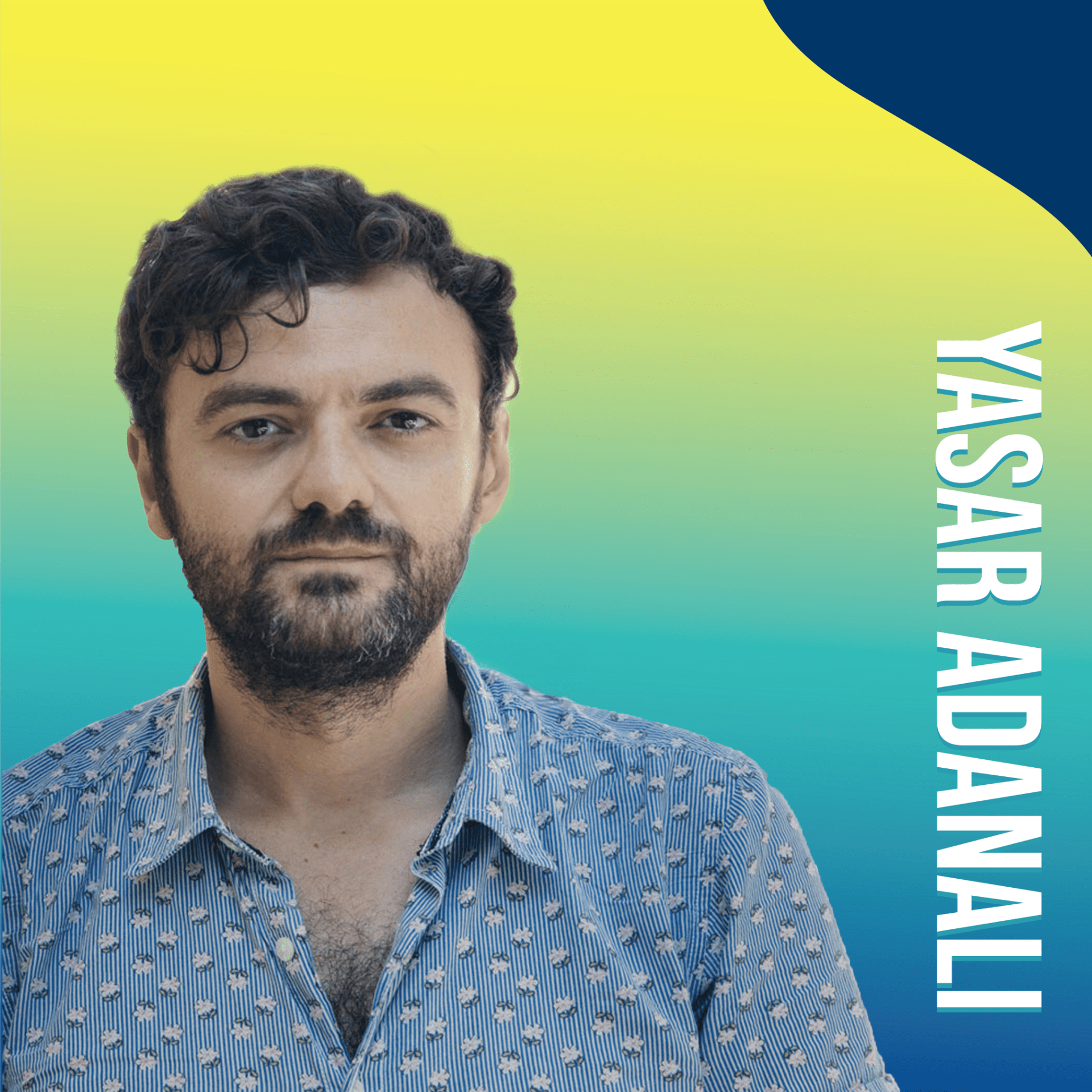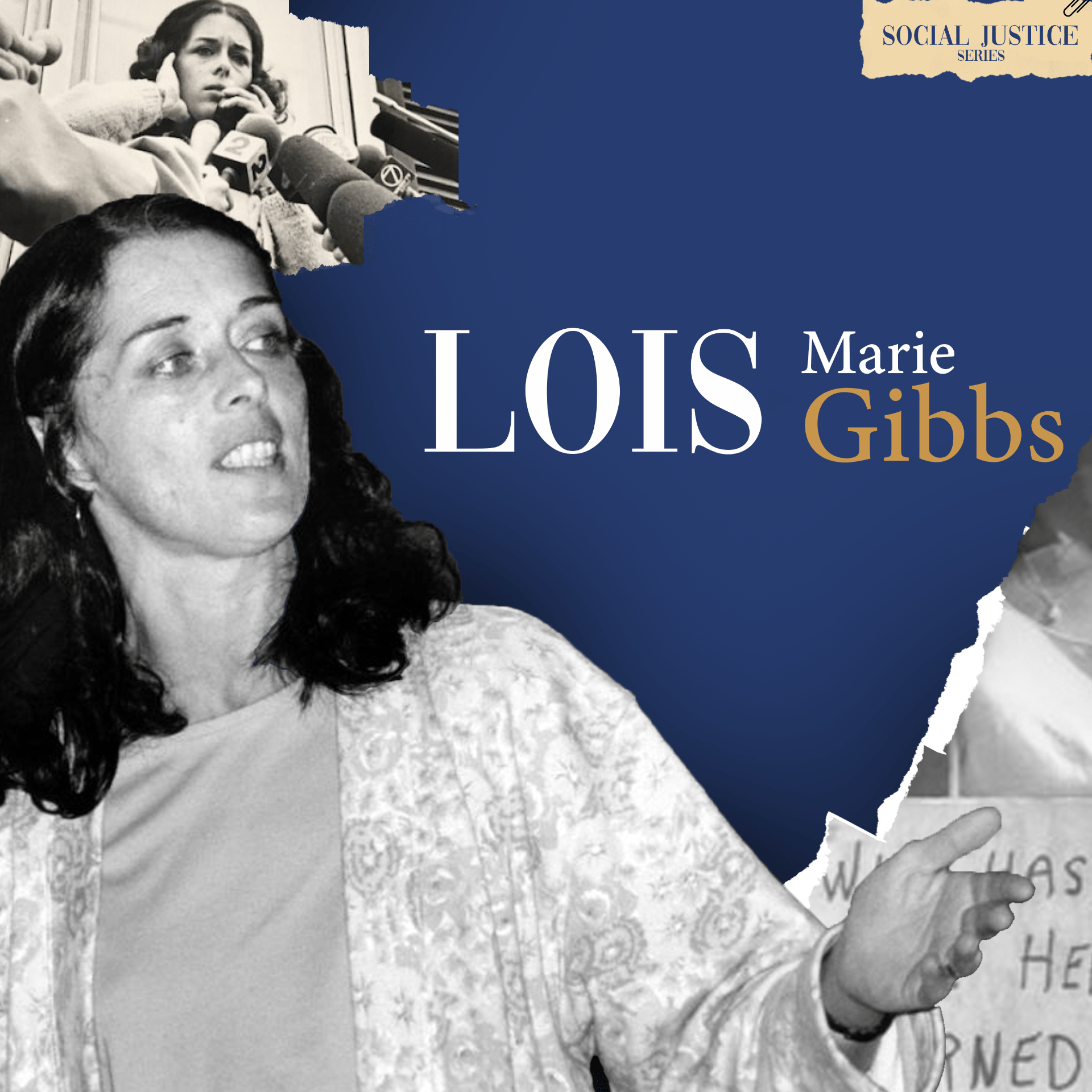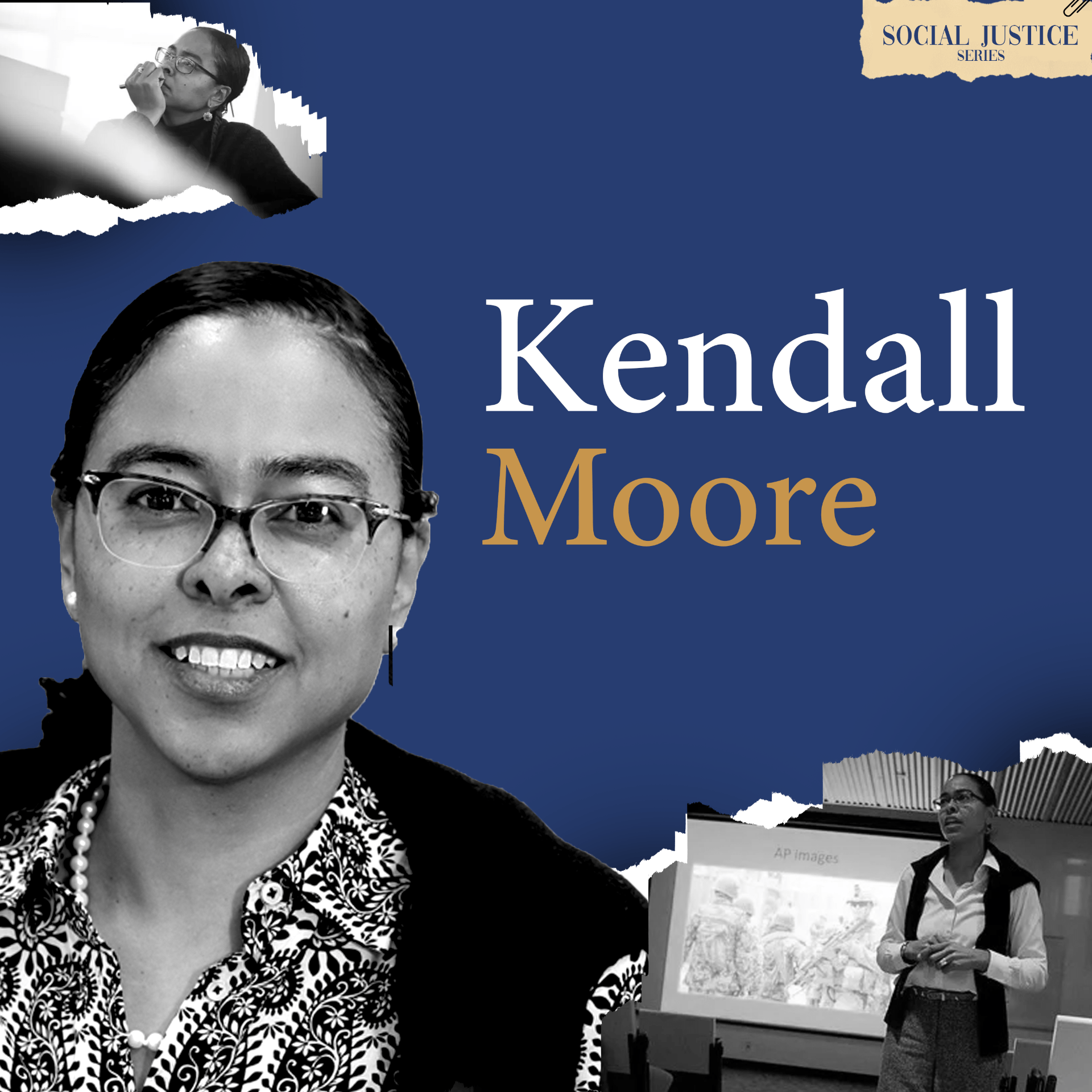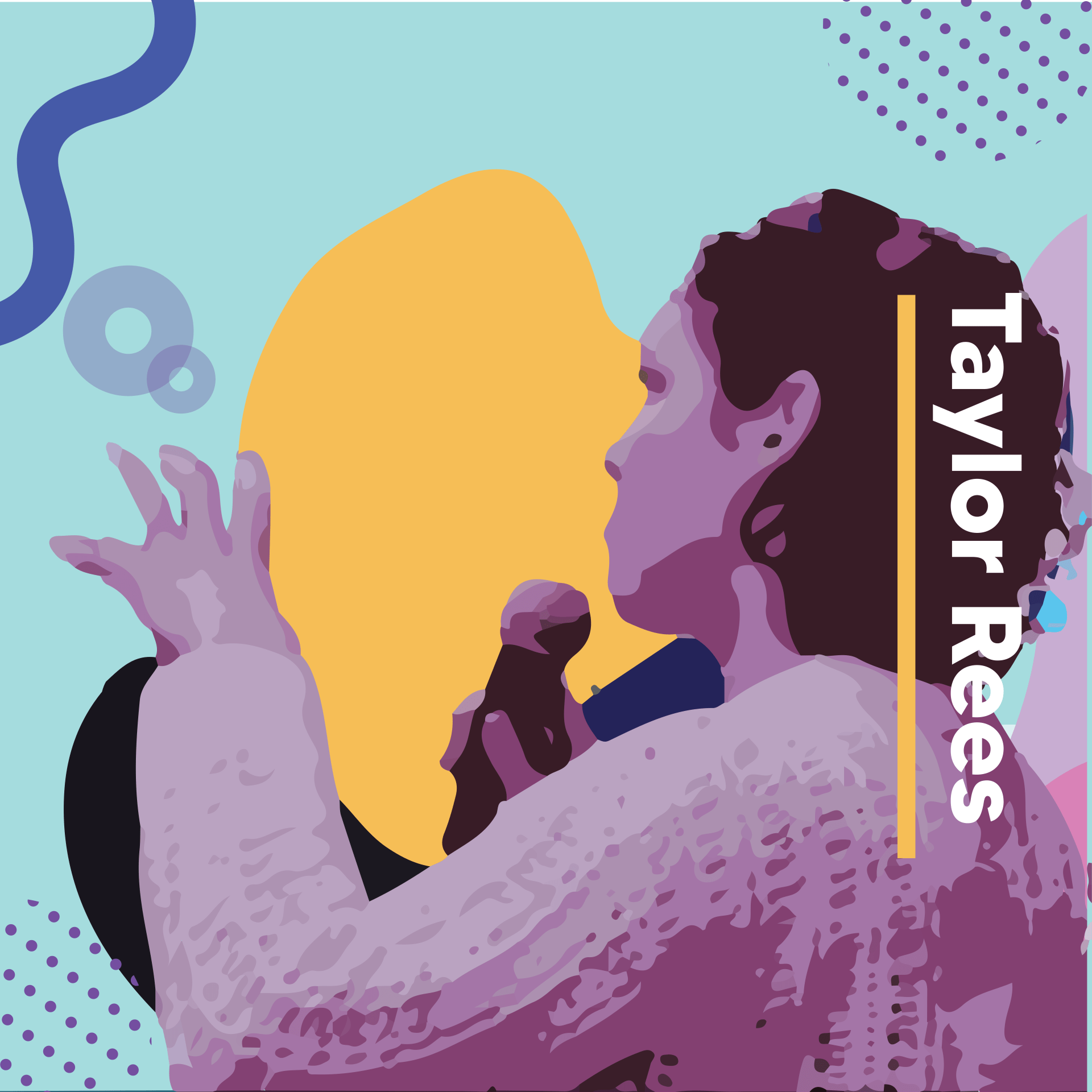
Episode #07
Yasar Adanali
on
Storytelling through Urban Spaces
Join the Global Lab conversation with Yasar Adanali about the deep meaning behind our urban spaces and the people who dwell in cities. In this episode, Yasar Adanali talks about his advocacy work with marginalized communities while highlighting the internal and external actors who make cities work, including the role of children in urban design and urban realities. Hear an urban activist researcher’s views on how to think about democracy and social justice in cities, and what to keep in mind while planning urban spaces.
Hosted by Prof. Stephen McCauley, The Global School, WPI
Yasar Adanali on Storytelling through Urban Spaces
Guest Bio
Yasar Adanali is an activist and a researcher based in Istanbul. He is the CoFounder and Director of the Center for Spatial justice in Istanbul, which works towards making cities and rural spaces fairer, ecological, and democratic. Yasar Adanali also volunteers for Düzce Hope Homes, the first participatory public housing project in Turkey.
Transcript
Scroll to read more
Intro 00:03
empathize, engage,inquire, participate, collaborate, amplify. Welcome to Story world, where we feature creative scholarship and global engagement by students, faculty, guests and friends at the Global lab at WPI. Storyworld. Explore with us
Steve McCauley 00:28
Steven McCauley with the global lab at WPI. I’m with Yashar at Denali. Yashar is an urbanist activist researcher based in Istanbul, he is the co founder and director of the Center for spatial justice in Istanbul. You start welcome. Thank you. So we’ve been able to hang out a little bit the last few days here. And I’m really impressed with the commitment and passion you bring to real Praxis around democracy and social justice in the city, as well as the real close integration of that practice with theory. Can you give us a little bit of backstory into what were some of your early influences that led you to this kind of work?
Yasar Adanali 01:10
Sure. Well, I think it all goes back to my college years, I started studying at the college almost two decades ago, in 1999, right after the big earthquake, that hits Istanbul and all the region. And at that time, I was planning to study economics and be an investor banker, you know, I didn’t really want to get into social justice issues so much. I mean, I had a very limited perspective on my future. But the college that I was part of, I think, similar to what you guys also trying to promote here, give space for engaging with different communities. And that’s kind of really provoke something in me that there’s something more than just being a banker in the world. And there’s nothing necessarily wrong about it. But that’s kind of I’d start understanding there’s some other possibilities in life. So that’s one aspect. And then I started working with the children affected by the earthquake, and we organize some summer camps and that kind of move further deeper along my studies. And I, I realized, I need to develop my academically as well like getting classes on civil society, on social research, qualitative research, and ethnographic studies, global studies. So these were kind of becoming my interests while I was engaging with different communities and real life issues. And yeah, and then I was in a campus environment, which was, the moment I started studying, the campus was still in construction. So it was a very new setup. We were isolated from the big city, Istanbul, I moved from a small town to Istanbul with kind of willing to be part of this beautiful city life. But I ended up in the very kind of at the age of the city in this construction site and isolated campus. So there was something this desire to be in urban environments. So I try to kind of use every opportunity to be in in very urbanized parts of the country, but also the globe. So whenever I had a chance, I traveled to different cities and work with people volunteered. So that’s the kind of beginning of the very beginning of the story of
Steve McCauley 03:35
great, so we’ll hear a little more about the work you’ve been doing since I think so. So you do some art and filmmaking, kind of with your activism and research. We saw a short film the other day that you’ve made, eat in the ice cream, where it’s a really sweet story that follows a young girl on a walk through Istanbul. And the question is, will she find a park in which she can sit in and enjoy her ice cream before the ice cream melts? And so as a really nice commentary about the experience of a city, and now as I understand you have another film, it also focuses on young people 95 centimeters, mega city, many citizens. Can you tell us about that? Yeah, sure.
Yasar Adanali 04:11
I mean, you know, we as an institution center for spatial justice, we are really trying to co produce knowledge to make our life better in our cities in the countryside. But what we are really aware of is production of knowledge. If we want to make social change, have a social impact is not enough. We have to disseminate that effectively as well. And we believe in filmmaking is one of those mediums that will allow, you know, well taught, well produced knowledge to reach out to broader publics that has the, you know, the power. So this this movie that we are working on is actually one of the demands like when of the kind of works, we focus on to democratize the way in which we think about our cities. You know, we claim that In a mega city like Istanbul, 17 million people are living. Yeah, children’s are also living and children’s are not only, you know, anyone but their citizens. So they have right to have, say, in the way in which the cities are being designed. So that is the kind of initial point and what we were claiming that, you know, as adults, we are not maybe doing a great job in planning and designing our cities. So especially when looking from the young children’s perspective to our cities, and when allowing them to put a mirror to our jobs now, like what we do, we realize that, yeah, maybe we realize better that we’re not doing a good job to provide equal, accessible, livable city for all. And in 95 centimeters, the name comes from, you know, 95 centimeters, and average three year old kids heights, but its average is also kind of a bit might be misleading. The children are very diverse. So that’s why in our movie, there are four main characters. They’re from both different realities, Urban Realities, there’s a refugee girl from Syria, who came to Istanbul grew up in Istanbul, but it’s a different urban experience, we have a kid growing up in a slightly kind of lower income area, informally developed neighborhood, but very actively engaging with the neighborhood that he lives in, with a kid growing up in the middle of urban renewal in the downtown area. So always dealing with construction, going on around and thinking about them being influenced by them. And we had a kid growing up in a gated community in affluent part of the city, but maybe with a bit limited interaction with the other citizens and this urban life, right? So this minute citizens tells us their day in the city from their perspective, and open up their kind of world. And I think there’s a lot of lessons to learn from that, like in terms of our job, like how good we are in building the cities, but also kind of how to change it, like, you know, what, what we need to do more better. And yeah, and this movies like we are, we have been sending it around in festivals, but also use them in the university environment, like the one WPI and other places. But also we engage with city officials, municipalities, and we send these movies and watch with the municipalities and ask the officials opinion opinions about what they see from the eyes of the children. So that’s one of the kinds of ways in which we work tried to include participate, different citizens, including children,
Steve McCauley 07:55
and what kind of reactions have you received from policymakers officials when they see this perspective?
Yasar Adanali 08:00
I mean, to be honest, we use we receive quite honest reaction as well, like they are aware of the fact that there are a lot room to improvement in our cities, they’re aware of the fact that maybe they’re not doing great job in terms of being equitable in urban services in all parts of the city. Now, in terms of playgrounds, like you know, not everywhere has the same quality of playgrounds in Istanbul, but I’m sure in many cities around the world as well, no, or in terms of kind of accessibility in terms of the conditions of the payments, etc, they kind of see the, the problems more clearly. And they right away, start kind of offering improvements in the way but of course, you need to follow up on these, you know, this one way of engaging with the city officers, but then you need to follow up on the improvements. And sometimes not enough, you need to offer improvement yourself at some citizen groups or organization like ours, and try to push a bit more pressure on the elected officers to do something.
Steve McCauley 09:09
Right. When I think about these kids, particularly the ones you described growing up in either the zone of constant construction and development or in a gated community, I think sometimes in this mega city landscape, and it’s a it’s a mega city, not not just that there’s 50 million people, but that it’s this landscape of somebody’s hyper capitalism with this kind of very, kind of fast paced development of skyscrapers and kind of episodic developments that kind of come and go. And I sometimes wonder how can you not lose hope in a way being for real democracy and justice in a city like that, but then it’s obvious because the work you’re doing is all about generating hope. So could you tell us maybe just quick overview of sort of the political economy of sort of mega city development in Istanbul but then about the work you’re doing, especially maybe with the hope archives,
Yasar Adanali 09:56
I mean, you know, like we have to keep since we are focused on social justice and the city, we really have to be aware of the changes transformations in our cities, you know, in the landscape and, and as you kind of nicely frame it that not always very inclusive, not always very kind of fair to all and is especially large scale development mega projects, as well as urban renewal projects that are in a way, dropped from top to the communities could be very detrimental is a very kind of harsh social and environmental impact on our cities, is almost a level of crisis. No, and when we kind of document these, these these issues, when we map these issues, when we make publications and research on these issues, our focus might shift so much on the problems and with not paying enough attention on the potentialities in our cities, you know, potentialities of the children, potentialities of the academic research that is socially engaged potentialities of the Civic research and work like like ours. So we said, Okay, we have to focus on the Spaces of Hope as well, as much as we focus on spaces of destruction spaces of contestation spaces of capital. So because there’s a lot of hopeful practices going on in our cities, as well. So we start this mapping project, which basically map various Spaces of Hope, not only in Istanbul, not only in Turkish cities, but globally. That’s an open platform, participatory platform. And our initial intention was less than that. Moving images, like moving images of hopeful practices, hopeful spaces. And now we are upgrading it to also including photo stories, so not only videos, but also photo stories. You basically can, anywhere on the map around the world, we pin a point where you believe it is a hot food practice making our life in our cities and the countryside better. And then you have to categorize like, who are the actors behind this hopeful practice? What kind of themes they are dealing with is about housing, public space development, children development, whatever, what tools are represented in these videos, you know, are they doing stakeholder kind of inclusion, mapping, participatory design, whatever. So it’s a bit like a learning tool as well. And then, by these categories, you start seeing linkages between different Spaces of Hope, different actors. And it’s becoming almost like a guide for those who want to make hopeful changes in their localities in the kind of environment to get direct contact with these other actors and build maybe larger movements, etc, etc. So that that’s the work of archive trying to archive hopeful practices so that we can balance this so much focus on the negativity and unreal problems, of course. Yeah,
Steve McCauley 13:05
so there’s a real key role for both art and storytelling, I would say, in making these connections and making it all visible. Can you speak a little bit to the relevancy of art,
Yasar Adanali 13:15
I mean, you know, people like us researchers, and you know, engineers, designers, architects that we always do, if we do our job, right, we have a lot to offer, but not necessarily the kind of knowledge that we produce the kinds of projects we do. Without that touch. Without that kind of real engagement with art with this kind of dissemination focus will be have a limited impact, thus, I strongly believe so, when we have a report, now, it could be a report on the conditions of the kind of water pollution in our cities. And it’s much as the information is matters, the way we communicate that information with broader publics and how to really get to level of the citizens so that they can fully understand and being kind of motivated to act on it is important and they’re I think design, graphic design, art filmmaking, documentary filming, these are as important as the knowledge production itself. And we believe they shouldn’t be just, you know, giving a bit of uplift, you know, make up to what, what we produce, but from the very beginning, we should design our projects, our research in this kind of multidisciplinary environment. So yeah, I think they have absolutely critical role to make a real change.
Steve McCauley 14:49
Another project that I’ve been really interested in, connects people with the city in real ways is the walks that you do. Can you talk about the work that the senator does, with walks Yeah,
Yasar Adanali 15:00
and basically we call them advocacy walks, we are advocating to live in a fairer cities, obviously, but these walks not only take place in urban areas, but also we do these walks in environmentally kind of problematic areas as well, you know, we call them the hotspots, environmental hotspots where there is some contestation large project having a huge ecological footprint, or a lack of environmental impact assessment. So we try to identify issues problems, we try to kind of formulate our research questions are kind of reconnect with our mission by being on the field. So walking allows us like being on the field, right being seeing the problem at the sport, and then realizing connections to further implications of those problems, go beyond the most visible issues, and also connect with the people connect with the actors that are trying to do awful things, but also being directly affected by these processes. So that is really key to our overall work, being present. And being engaged and, and all of our co production of knowledge, take it as basis from these these walks. And we believe it’s as a methodology, but also pedagogy. You don’t only kind of learn extract, you also give a new kind of make a kind of an interactive interface in understanding our spatial realities,
Steve McCauley 16:35
right, and it’s at the scale of the human body human connection.
Yasar Adanali 16:38
Exactly. And also, you see, like, like the ethers case, you know, when walking comes with a lot of other kind of realities. And sometimes you cannot walk, sometimes you’ve been stopped by some actors outside yourself, like the security, whatever, sometimes you realize it is also not safe for you to be there. So you have to kind of rethink. And so there’s a lot of possibilities, a lot of kind of unexpected realities that doors open to you through to walking.
Steve McCauley 17:13
And so a lot of your work I’m in it, it raises questions about the subjectivities of the city, and a lot of your work advocates for those are maybe marginalized and marginalized communities. I’m curious about the subjectivities of those inhabiting spaces that are I guess, gentrified spaces that kind of de politicized or kind of sterile spaces of the new urbanism. Have you had any successes in kind of making inroads and opening up? I guess, the minds and the perspectives of sort of people and having those spaces kind of re valorize those spaces?
Yasar Adanali 17:49
Yeah, I think we like this has been not only our work, but there’s there has been this growing interest in this kind of questions of justice, sustainability, democracy and space, etc, etc. Notice has been kind of culminating. And we are one of the kinds of products of maybe very visible products of this seeking an alternative seeking the just city seeking the justice system now. And I think we have impact in the sense that the rhetoric is changing of those who are making these sterile, sterile places now of those policymaker, why kind of still making the same mistakes of urban renewal? Who are doing urban planning without participation of people, etc, etc, in the last few years, more so we see this an alternative discourse rising, saying that no, no, the community is important. Yeah, we should engage more the citizens. Yeah, maybe these kinds of new, these sterile dis gentrified places come with these problems as well, we have to kind of try to take that into consideration. So we also start to see the changes, maybe not in the physical space yet, but a discursive level. And I, you know, discourse is power discourse is where the change start. And you can’t really argue in a more or less make more segregated cities like now people are aware of that, like testers, or citizens has no room in participating in decisions regarding their houses, their neighborhoods, their cities. I think we see we have a bit of progress in that sense. And that keeps me hopeful as well, that.
Steve McCauley 19:26
Great, great, well, we love the work that you do. I wonder I think you can maybe help us out a bit actually, you know, here at WPI we, we do a lot of work in communities around the world with students. We call it project based learning where we do immersive and kind of deeply collaborative work with a lot of people around the world on all kinds of topics from a job readiness to urban upgrading to water and sanitation, early childhood education, lots of things our students can evolve with. And we’ve seen it as a really invaluable learning experience. For the students, which it is, we’re also interested in the way we are adding value with our partners and the kinds of impacts we’re making in communities. And we’ve been thinking about how do we do more of that? How do we do it better? And even how do we talk about it, because as we aim to do more, excuse me, as we aim to do more in the communities we work with, or that help more positive social change with our partners, we’re conscious to not reproduce certain kinds of ways of interacting or colonial histories that kind of are part of this. And, and so can you help us just think about how academics and universities can engage in really positive ways with community partners, working towards social change? And even how to think about it and frame it?
Yasar Adanali 20:45
Yeah, sure. Well, I think that kind of university community University kind of civil society collaborations are key. I mean, both for making students aware of their potential, and also to really contribute to people on the ground, trying to make the world a better place. But that has to be well created, well taught, and I’m sure you have been given a lot of thought on that. And one thing, like in the debates around participation, like how we frame our research question, or how we frame our project proposals, you know, I think it’s very key to jointly, including the faculty, academic students, as well as the local partners, like jointly frame these, these projects, no, and that’s, that’s an initial step. And, and mostly, I’m this this risk of in this kind of collaboration, you have a lot to offer, of course, but you also have a limited time and you want this things to be done. And the local partners, they might also be like, okay, you know, it’s nice, they will be coming, but not necessarily the adult world, we will come from the students capacities, or the whole kind of group work. But in other ways are these you know, the American students are here. So it’s a nice kind of show for our organization, or is we can get some other material benefit wherever, you know, these these things happen. So I think it’s really important to really to identify the problem collectively and try to come up with something producible in this given short given time, and actually live, it’s like, actually show it presented. And, and so that’s, I think one thing, and maybe going back to what we were saying about production and dissemination, start thinking that from the very beginning of this process, right, like, like how we can really, effectively communicate what we’re going to produce in this two weeks, three weeks, one month’s time in this in this experience, I think that could be another humble recommendation that that I can make. And yeah, I mean, really try to make things visible and like, try to produce things that can be inspired that, that that work as well that people are going through.
Steve McCauley 23:12
Oh, yeah, sure. Thank you so much. This has been really interesting and valuable for us.
Yasar Adanali 23:16
Thank you for hosting me.
Intro 23:18
Thank you. Thank you for listening to Storyworld Be sure to follow us on Instagram and Facebook at WPI global lab and our website global lab.wpi.edu. Stay tuned for more from the global lab.
Tags:





